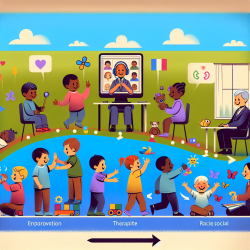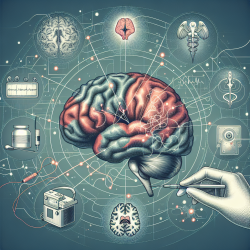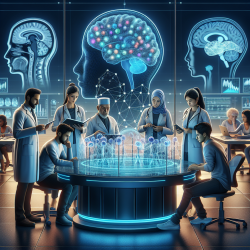Understanding Ion Transport: A New Perspective for Speech-Language Pathologists
In the world of speech-language pathology, the focus is often on communication skills, language development, and therapeutic interventions. However, the underlying science of how our bodies function, including ion transport in fluids, can provide valuable insights into our practice. The research article "Diffusion of Charged Species in Liquids" offers a groundbreaking perspective on ion transport, which has implications far beyond the traditional applications in batteries and fuel cells. As practitioners dedicated to creating great outcomes for children, understanding these principles can enhance our ability to make data-driven decisions.
The Science Behind Ion Transport
The study by del Río and Whitaker (2016) delves into the mechanics of ion diffusion in fluids, presenting a comprehensive analysis of how charged species move under the influence of electrostatic fields. This research challenges the classic Nernst-Planck equation, traditionally used to describe ion transport in ideal gas mixtures, by introducing a new equation applicable to liquid mixtures. This distinction is crucial as it highlights the complexity of ion transport in non-ideal conditions, such as those found in biological systems.
Implications for Speech-Language Pathology
While the direct connection between ion transport and speech-language pathology may not be immediately apparent, the principles outlined in this research can inform our understanding of neurophysiological processes. Ion channels play a critical role in nerve signal transmission, which is fundamental to speech and language processing. By understanding the nuances of ion transport, practitioners can gain deeper insights into neurological conditions that affect communication, potentially leading to more targeted and effective interventions.
Data-Driven Decisions in Therapy
As practitioners who rely on evidence-based practices, integrating scientific insights into our therapeutic approaches is essential. The findings from this study encourage us to consider the biochemical and physiological aspects of communication disorders. For instance, understanding how ion transport affects neural activity could influence our approach to conditions such as dysarthria or apraxia of speech, where motor control is impacted.
Encouraging Further Research
The study emphasizes the need for continued research into the limitations of the Nernst-Planck equation in non-ideal conditions. For speech-language pathologists, this highlights the importance of staying informed about advancements in related scientific fields. By encouraging interdisciplinary research, we can uncover new strategies for intervention and improve outcomes for the children we serve.
Conclusion
Incorporating scientific principles from diverse fields can enhance our practice as speech-language pathologists. The research on ion transport offers a unique perspective that can inform our understanding of communication disorders and lead to more effective therapeutic interventions. By embracing data-driven decisions and fostering a spirit of inquiry, we can continue to improve the lives of the children we serve.
To read the original research paper, please follow this link: Diffusion of Charged Species in Liquids.










